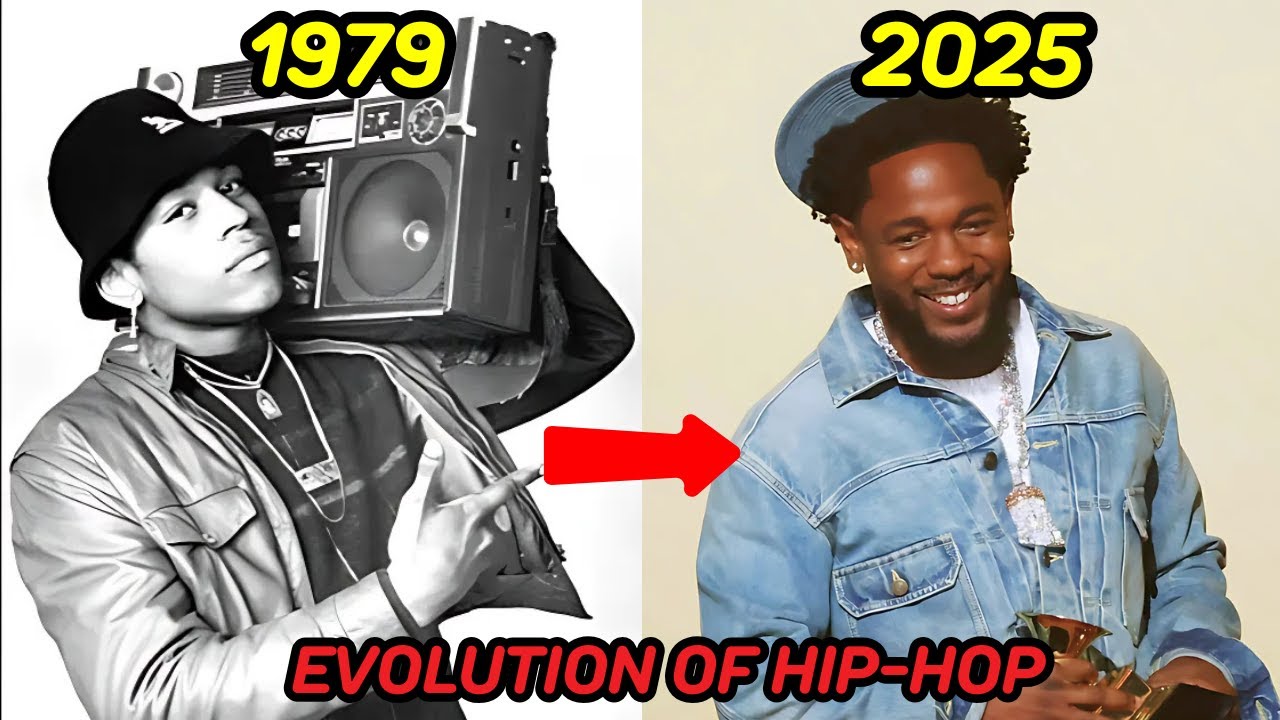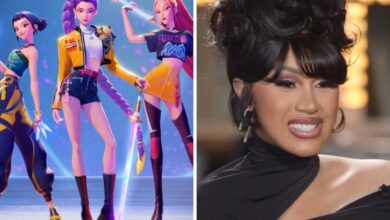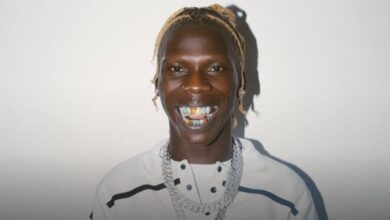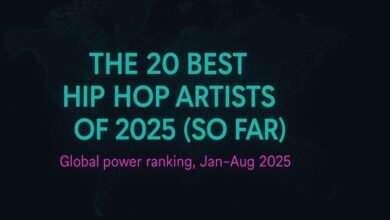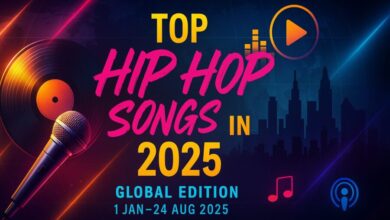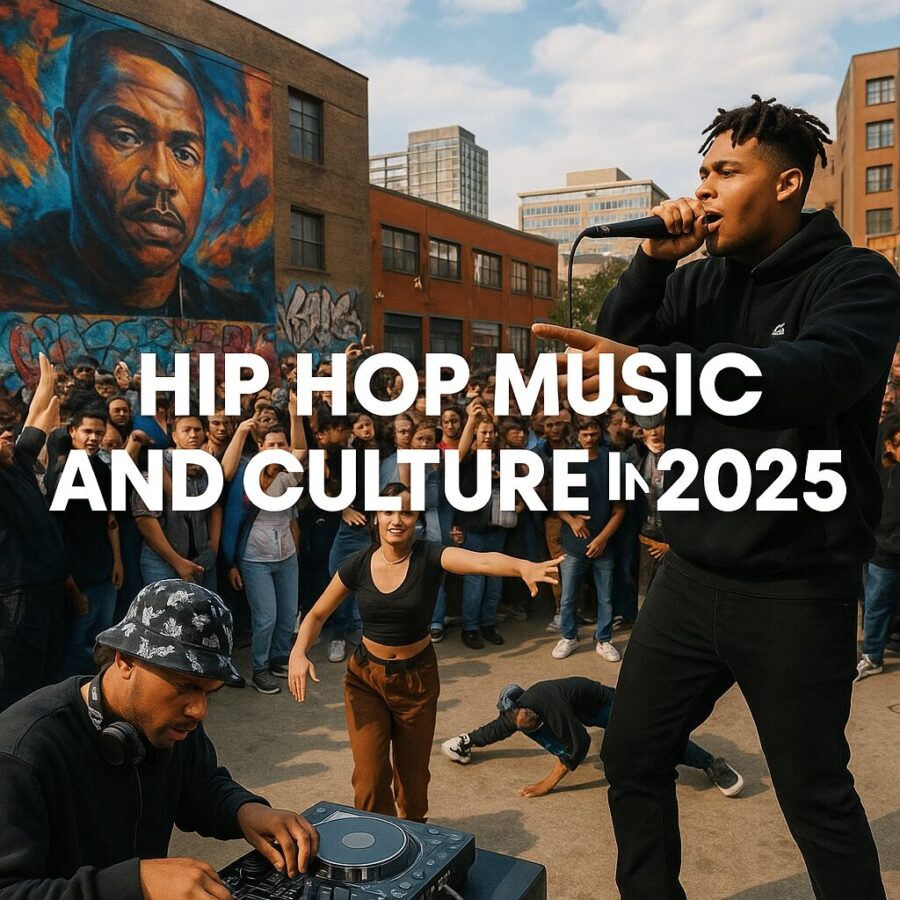
A community hip-hop festival in an urban plaza, illustrating the genre’s broad cultural presence. Hip hop in 2025 stands as a mature yet vibrant force in music. Now over 50 years removed from its Bronx block-party origins, the genre has grown into a worldwide phenomenon. It has evolved from the early days of DJs and MCs rapping over breakbeats into a spectrum of styles that dominate charts and stream counts. Importantly, hip hop’s cultural influence remains profound – shaping language, social commentary, and the very way music is produced and consumed in the digital age.
Evolution of the Genre up to 2025
From its inception in the 1970s and political roots in the ’80s, through the ’90s “Golden Age” of lyrical rap and the 2000s explosion of Southern hip hop, the genre has continually reinvented itself. By the 2010s, hip hop became the most popular music genre in the United States, fueled by the rise of trap music and the streaming revolution. Fast-forward to 2025, and hip hop has firmly cemented its mainstream status globally, while also branching into countless sub-scenes. The past few years saw hip hop celebrate its 50th anniversary, prompting reflection on its journey from underground movement to pop culture dominance. At the same time, questions arose about its future: with such a legacy behind it, how is hip hop continuing to innovate?
Technological shifts have played a key role in the genre’s evolution. The dominance of streaming platforms and social media has changed how artists release music and engage with fans. Albums can go viral on TikTok or YouTube overnight, and underground talents can build huge followings without major label support. Notably, many of today’s rappers first gained fame on SoundCloud or through viral videos. This democratization means hip hop in 2025 isn’t just coming from established labels in New York or LA – it’s coming from every corner of the internet and the world. Yet, even with all these changes, the core spirit of hip hop – self-expression, storytelling, and the voice of marginalized communities – remains as strong as ever.
Dominant Sounds and Subgenres in 2025
The sound of hip hop in 2025 is diverse, but a few styles stand out as particularly influential. Trap music, with its booming 808 bass, skittering hi-hats, and melodic autotuned flows, continues to be the mainstream baseline for many hits. The trap sound that surged in the mid-2010s has proven remarkably resilient – you can hear its DNA in everything from club anthems to pop crossovers. However, the genre’s landscape is far from static. In recent years, regional scenes like drill rap have risen to prominence. Originating in Chicago and finding new life in places like London and New York, drill is characterized by ominous beats and gritty street narratives. The late Pop Smoke’s Brooklyn drill tracks, for example, helped propel that sound globally, and artists in the UK (with UK drill) and even beyond have put their own spin on it.
Another prevailing trend is the fusion of rap with melody and other genres. The lines between rap and R&B are especially blurred – many of today’s biggest “rap” songs feature sung choruses or emotive crooning. This melodic rap wave, influenced by the late Juice WRLD’s emotive emo-rap style and artists like Post Malone, has made hip hop more sonically varied and emotionally resonant. Simultaneously, there’s an experimental streak in 2025’s hip hop: take the so-called “rage” sound popularized by artists like Playboi Carti and Trippie Redd, which blends hyperactive synths (inspired by videogame and hyperpop music) with rap, creating an intense, otherworldly vibe in tracks that energize mosh pits.
Beyond these, numerous microgenres flourish via online communities. For instance, pluggnb – an underground blend of dreamy R&B melodies with trap beats – exploded on platforms like SoundCloud and is influencing mainstream productions. There’s also been a resurgence of phonk, a subgenre born from 1990s Memphis rap samples and cowbells, which oddly found new life as background music for TikTok car videos and is now popular in Europe and South America. Even lo-fi hip hop, largely instrumental and used for relaxed listening or study playlists, has carved out its own niche in the streaming world. On the opposite end, veteran fans will be pleased to find that classic styles haven’t vanished: there’s an appetite for the raw ’90s boom-bap sound in the underground, and artists like Griselda have built a following reviving gritty, sample-based beats. The result is that in 2025, hip hop’s sonic palette is broader than ever – whether you prefer hard-hitting trap drums, socially conscious jazz-rap, danceable club beats or genre-bending experimentations, there’s a corner of hip hop catering to it.
An independent hip-hop artist energizes the crowd during a live club performance. One notable development in recent years is how international influences have been woven into hip hop’s fabric. Latin trap and reggaeton have introduced Spanish-language rap stars to global audiences, with artists seamlessly switching between English and Spanish in their verses. Afrobeat and hip hop have also found common ground – collaborations between American rappers and African artists (for example, Nigerian and Ghanaian hip hop acts) are increasingly common, infusing rap with Afro-Caribbean rhythms. In Asia, the huge popularity of K-pop has a hip hop undercurrent: Korean groups often feature rap verses, and a thriving K-hip hop scene (from Seoul’s underground crews to chart-topping acts like BTS’s rap line) merges local culture with classic hip hop elements. These cross-pollinations mean the sound of hip hop is no longer confined to a single template or geography. A track might feature a trap beat with Latin percussion and a sung hook, or a drill beat laced with Arabic or Afrobeat samples – reflecting the genre’s global exchange of ideas. Far from losing its identity, hip hop is enriching itself by absorbing these influences, proving its ability to adapt and innovate.
Influential Artists Shaping 2025
At the heart of hip hop’s continued vitality are the artists – from legendary veterans to breakthrough newcomers – who define its direction. In 2025, a handful of heavyweight figures still tower over the landscape. Drake, for instance, remains an unavoidable presence in the music world; his knack for constant hit-making and adapting to new trends (whether it’s dancehall-infused jams or trap ballads) keeps him at the top of charts and streaming playlists. Likewise, Kendrick Lamar upholds his status as a cultural and lyrical force – fresh off major accolades in recent years, he’s known for crafting albums that are both critically acclaimed art and social commentary. Kendrick’s performances, including headlining the Super Bowl halftime show, demonstrate how far hip hop has come: from the margins to the centerpiece of global pop culture.
J. Cole also deserves mention as a beacon of lyricism; without heavy promotion or flashy antics, he regularly goes platinum and headlines festivals, showing the power of authenticity and storytelling in rap. In the same breath, one can’t overlook the influence of hip hop’s reigning queens. Cardi B and Megan Thee Stallion are two prime examples – they’ve each delivered chart-topping hits (like Cardi’s unstoppable “Bodak Yellow” and the Cardi/Megan collaboration “WAP”) and have become icons of empowerment, proving that female rappers are leading from the front. They rap about confidence, sexuality, and independence in ways that galvanize millions of listeners, and their social media presence keeps them intimately connected with a massive fanbase. Longtime icon Nicki Minaj also continues to drop high-profile verses, influencing the next generation of women in hip hop.
A headlining hip-hop artist electrifies a festival crowd with an energetic performance. The newer generation of rap stars is equally crucial in 2025. Lil Baby, for example, has in a short time built a reputation as one of the foremost hitmakers, combining authentic street narratives with polished trap production – his work ethic and consistent output have him hailed as a voice of the new school. Doja Cat, while genre-blending, is a superstar who straddles pop and rap with ease; her viral savvy and chameleonic style (rapping on one track, singing on the next) epitomize the modern artist who refuses to be boxed in. Meanwhile, innovators like Tyler, The Creator have pushed hip hop’s creative boundaries, from production that fuses soul, jazz, and indie flavors to conceptual albums that earn critical acclaim (including Grammy Awards). Tyler’s evolution from an internet provocateur to a respected auteur mirrors hip hop’s own growth into a more expansive art form.
It’s also impossible to ignore the impact of artists who tragically are no longer with us. Posthumous releases from the likes of Juice WRLD (who brought emotional vulnerability to the forefront of rap) and Pop Smoke (who amplified the drill movement) continue to top charts, indicating how deeply their styles resonated and how their influence carries on in younger artists. Additionally, hip hop’s global nature means influential artists aren’t only American. In the UK, rappers such as Stormzy and Little Simz have achieved both critical respect and mainstream success, bringing British accents and perspectives to the international stage. In France, artists rap in French and still rack up hundreds of millions of streams domestically and across French-speaking countries. Latin trap stars and reggaetoneros like Bad Bunny and Ozuna routinely blend rap verses into their songs, becoming some of the most streamed artists in the world (transcending language barriers in the process). Simply put, the “face” of hip hop in 2025 is not one face, but many – a mosaic of different ages, genders, and nationalities. Each is influential in their sphere, and together they push the culture forward.
Global Impact and Cultural Significance
Perhaps the most remarkable aspect of hip hop in 2025 is its truly global impact. Once an American urban youth movement, hip hop has become a universal language for young people worldwide. You can travel to virtually any country and find a local hip hop scene – whether it’s rappers spitting rapid-fire rhymes in Spanish in the barrios of Colombia, MCs in Nigeria blending pidgin English with Afrobeat grooves, or K-pop idols rapping in Korean to stadiums full of fans. This global spread means hip hop has become a vehicle for local storytelling. Artists everywhere have adopted hip hop’s ethos to address their own social and political issues, from income inequality and racism to personal struggles with mental health. As a result, hip hop culture has given a voice to countless communities, allowing people to share their truths over a beat, no matter what language they speak.
Beyond the music itself, hip hop’s cultural fingerprints are visible almost everywhere. The slang and catchphrases born in rap lyrics often end up in everyday conversation and internet memes. Hip hop dances and challenges frequently go viral on platforms like TikTok, further spreading the culture. The genre has also maintained its role as a catalyst for dialogue and change. For example, hip hop artists have been at the forefront of movements like Black Lives Matter, using their songs and fame to highlight injustice – recall that tracks like Kendrick Lamar’s “Alright” became protest anthems, and artists such as Killer Mike and Noname have combined music with activism. In 2025, listeners continue to look to hip hop for unflinching reflections of society’s truths. Surveys of fans find that a majority feel rap music helps them understand social issues better, underscoring how the genre educates as well as entertains.
Commercially and institutionally, hip hop’s influence is just as strong. Rappers are among the highest-earning entertainers, not only through music sales and streaming (where hip hop consistently occupies a large share of the market) but through entrepreneurial ventures – from headphones and sneaker lines to production companies. Festivals centered on hip hop draw global audiences (think of Rolling Loud or Wireless Festival), and it’s now common to see rap artists headlining what were once rock-dominated venues. Prestigious awards and institutions have also fully embraced hip hop; the Grammy Awards regularly honor rap albums in top categories, and in recent years even the Pulitzer Prize in Music was awarded to a hip hop album (Kendrick’s DAMN., marking a historical first for the genre). Furthermore, November is officially recognized in the United States as Hip Hop History Month, a sign of the genre’s acknowledged cultural importance from the streets to the halls of government.
To truly appreciate hip hop’s journey and its cultural significance, it’s worth taking a look at how far the music has come and the milestones along the way. The following video offers a time capsule, highlighting the biggest rap song of each year from hip hop’s birth to the present day – a reminder of the genre’s evolution and enduring impact:
In summary, the state of hip hop music and culture in 2025 is one of dynamic growth and global unity. The genre has come a long way from the block parties and turntable scratches that birthed it, yet it stays true to its roots of innovation and representing real life. Musically, hip hop constantly churns out new sounds while honoring its past, and culturally it continues to break barriers – elevating voices, influencing trends, and bringing people together across continents. As we look ahead, one thing is clear: hip hop will keep evolving, setting the soundtrack for future generations and leaving an indelible mark on the world.

